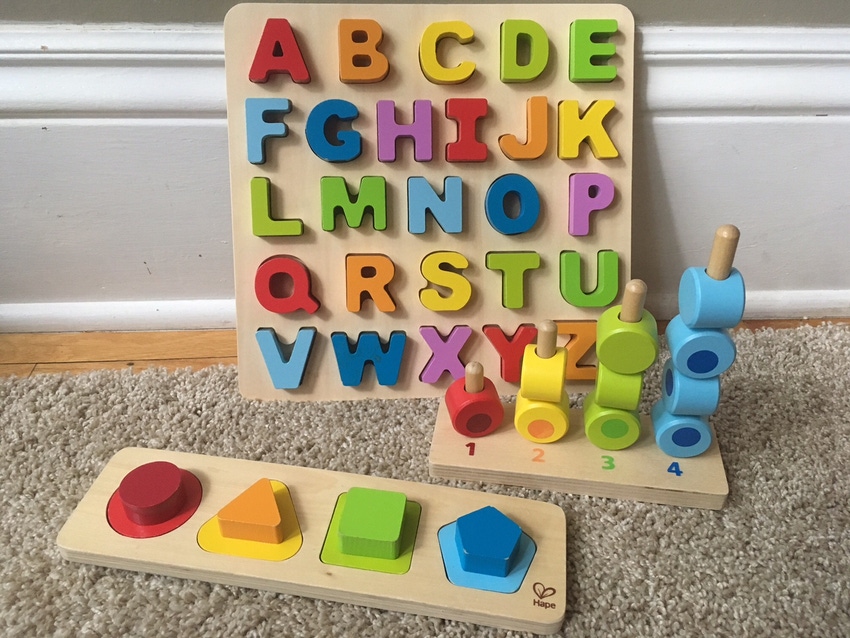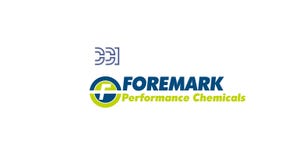April 3, 2018

Paul Golden
Rotary airlock valves are a critical component in many material handling systems. From dust collectors to pneumatic conveying systems, rotary airlocks not only control the feed rate but also minimize air leakage between equipment above and below the valve with differing levels of pressure or vacuum. In dust collection systems the rotary airlock allows continuous product discharge without having to turn off the vacuum to dump the accumulated material. Rotary airlocks are vital in pneumatic conveying systems, allowing the introduction of material into a pressure or vacuum stream with minimal loss of air.
Design & Construction
Rotary airlock valves have a heavy duty cast housing which consists of a body and two end covers, an internal rotating rotor, and a drive package. The body has an inlet and outlet that allows material to enter and exit the valve. The rotor has a shaft with multiple vanes, and the ends of the shaft extend out through the housing to external bearings supported by the end covers. Inside the housing, the vanes radiate out away from the shaft to the housing. The space between the rotor vanes creates pockets that pickup material at the inlet and as the rotor rotates, transport the pockets of material to the outlet. The empty pockets then rotate back to the inlet to pick up more material. The drive package consists of a gearbox and electric motor and connects to the rotor shaft by a chain drive or may be directly coupled. The rotor rotates relatively slow, typical speeds are 22 rpm or less.
So how does the rotary valve provide an airlock? While the valve does not create a 100% seal, the leakage rate is greatly reduced when properly designed. The body and end covers must be of heavy-duty design to withstand the pressure differential, and precisely machined to very tight tolerances. A raised face on the inside of the end cover fits tightly and accurately into the body bore to ensure a good seal and proper alignment between the rotor and housing. The rotor needs a large shaft to prevent deflection and typically eight or more vanes. The rotor, too, is precisely machined to fit tightly inside the housing. Typical clearances between the rotor and housing are .004 to .006 in., or roughly the thickness of a strand of coarse hair. These tight tolerances minimize air leakage as they allow the rotor to rotate with minimal clearances. The tighter the clearances, the less air that can leak through. The geometry of the body design is also important, as the more vanes and pockets that are contained within the housing and not exposed to the throats – the greater the seal.
Rotor Types & Selection
Rotary airlock manufacturers will have several different body styles, each that work best for certain applications. For this article, we are going to move on to the varying types of rotors and how to pick the best design based on the application. Proper rotor selection is a critical part of specifying a valve that will best suit the intended service, making a significant difference in the life of the valve and overall performance.
The first consideration is whether to use an open end rotor or closed end (shrouded) rotor. Refer to the photos of each. When viewing the open rotor from the shaft end, you will see multiple vanes radiating out creating V’s or U’s, which are the pockets. The ends of the vanes are left open. If water was poured into the top pocket, it would simply run out the sides.
The closed or shrouded rotor has round end discs that are welded to the shaft and ends of the vanes. Looking at the rotor from the end of the shaft, you will not see the ‘V’ pockets but instead a round disc. The ends of the vanes are closed off. Unlike the open rotor, water poured into the top pocket is retained by the end discs.
Which one is better, the open or closed rotor? As covered above, the rotary airlock provides an air seal because of the tight tolerances between the rotor and housing. This “seal” is maximized with surface area between the rotor vanes and housing. The greater the surface area, the greater the seal. Since the open rotor vanes extend all the way to the end covers, it has more surface area than the closed rotor and provides the better air seal.
However, the open rotor has its drawbacks as the material is in contact with the end covers. For abrasive products this leads to increased wear and may shorten the life of the valve. In higher temperature applications, this adds to the tolerances that need to be carefully machined. Fine materials tend to leak out through the shaft seals if not properly maintained. Other materials like thin flakes may become trapped between the sides of the rotor vanes and end cover faces which can lead to squealing or even stalling the valve.
The closed rotor is primarily intended for gravity flow applications or in lower pressure differential systems, but may also be used in high-pressure differentials when the rotary airlock is properly designed. When allowed, the closed end rotor is ideal for abrasive and high-temperature applications. In abrasive applications, the product is kept away from the end covers where most wear takes place. In high-temperature situations, the gap between the end cover and rotor eliminates any expansion concerns, leaving only the diameter to be machined. Product also cannot become wedged between the sides of the rotor vanes and end cover faces, as the pockets are closed off by the end discs.
Rotor Vane Design
Rotor vanes may be either solid fixed blades welded to the shaft, or shorter blades with a bolt on adjustable tip. Fixed blades are typically thicker and more rigid than adjustable tips. As product can become trapped under the adjustable blades, fixed blades are preferred in sanitary type applications such as food and pharmaceutical. Some products are also sticky or sluggish, and the fixed blade rotor allows these products to more easily exit the pocket.
Adjustable tips are utilized for applications in which special tips are required. Rotor tips can be either rigid or flexible, and are available for both open and closed end rotors. Rigid rotor tips should be utilized in all applications where the pressure differential exceeds 2 psi. Rigid rotor tips include mild steel, stainless steel, bronze, and abrasion-resistant steel. Bronzes tips are often requested when handling materials that are explosive or easily ignite. Abrasion-resistant tips are used obviously for abrasive materials to extend the life of the valve.
Flexible tips are generally used only in gravity flow applications, but can be used in lower pressure differential situations like a dust collection system. In higher pressure differentials, the flex tip will pull away from the housing and cause excessive leakage. Flexible tips may be produced out of almost any rubber. They are often utilized on larger particle size or fibrous products that would typically jam a solid vane rotor. If a particle becomes trapped between the flexible tip and the housing, the tip either gives way allowing it to fall into the next pocket or drags it around to the outlet where it falls out. The rubber used for the flexible tip should be selected based on the maximum temperature and the type of material passing through the valve.
Rotor Vane Options
The most common vane treatment is beveled edges. Some products tend to smear or build up on the internals of the housing. This smearing will cause additional drag, squealing, and may even lead to valve seizure. By beveling (or relieving) the trailing edge of the vane, this relieves the drag by reducing the surface area of the rotor. The beveled vanes also allow products to more easily escape if wedged between the rotor and housing. For open rotors, the beveling should be on the radial edge and both sides of the vanes. In applications with excessive smearing, specially designed scraper blades or cutter vanes are used to remove product buildup.
Rotor Pocket Options
The standard rotor pocket has a ‘V’ shape. While this works well is most applications, it may become troublesome with sticky products. A scalloped pocket rotor is where the bottom of the rotor pocket is rounded out to a ‘U’ shape and ground smooth or even polished. This is desirable in both sanitary and sticky applications, allowing the material to more easily discharge from the pocket.
Reduced volume is used to lower the capacity of the rotor. Smaller rotary airlocks may cause the material to bridge above the inlet. The reduced volume rotor allows a larger valve to be used to eliminate bridging and lower the discharge rate when you do not want to over feed the equipment downstream. Reduced volume is also used when to accurately feed material at a more consistent rate. Material tends to discharge from a rotary valve in clumps equivalent to the number of pockets. The reduced volume rotor allows a more even flow, consistent flow.
Staggered rotor pockets include a disc through the center of the rotor and opposing pockets on each side of the disc are off center. This in effect takes an 8-pocket rotor and turns it into a 16-pocket rotor. This helps give more consistent flow for more accurate discharge.
Rotor Coatings & Finishes
Coatings are used to help prevent wear and corrosion, or to achieve better product release. Coatings are normally applied to fixed blade rotors only. Nickel has some increase wear resistance, but is primarily used as a less expensive alternative to stainless steel to help prevent corrosion. Teflon is used on sticky materials that tend to build up in the pockets. Stellite is a highly abrasion-resistant material that is welded onto the outer edges of the rotor, then machined down to required tolerances. Rotors may also be chrome plated for abrasion resistance. There are also various plasma coatings which offer both abrasion resistance and low coefficient of friction for better product release. Stainless steel rotors can be polished to practically any finish.
Application specialists at the valve manufacturer will help you specify the correct rotary airlock for your system. Information vital to selecting the best valve includes: material being handled, bulk density, particle size, material characteristics, moisture content, temperature range, equipment above and below the valve, pressure or vacuum levels, and the desired discharge rate. They should have a vast experience in handling all types of products in various types of systems. Selecting the correct rotary airlock valve, rotor, and design features is critical to ensure successful operation with minimal air leakage and down time, along with maximum valve life.
Paul Golden is manager, Carolina Conveying, which specializes in powder handling components and material handling systems. The company manufactures a comprehensive range of products, including rotary airlock valves, diverter valves, gate valves, silo dischargers, screw feeders, bulk bag handling systems and portable bulk containers. For more information call 828-235-1005, or visit carolinaconveying.com.
You May Also Like


